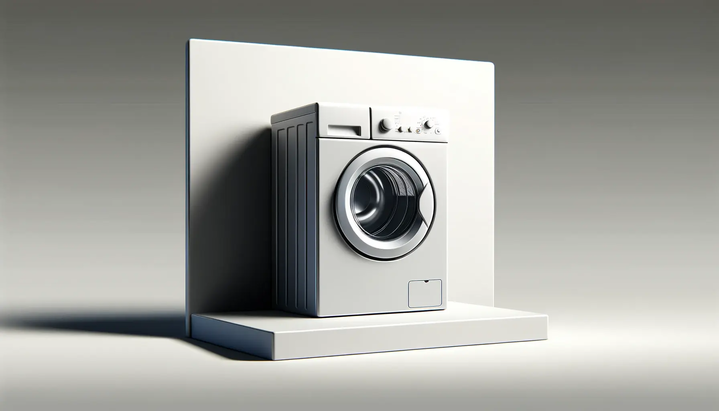

Throughout the process, the thermostat monitors water temperature, ensuring it matches selected wash settings and the lint filter collects debris to prevent clogs.
| Part Type | Description |
Washing Machine Drain Pump (Water Pump) |
The drain pump circulates water through the washing machine, pumping water in for the wash cycle, and draining it out during the spin cycle. |
Washing Machine Drum |
The drum is the inner basket of the washing machine that holds clothes during the wash cycle. It rotates to enable an effective wash. The washing machine drum is typically made from plastic or stainless steel. |
Washing Machine Drain Hose and Drain Hose Extensions |
The drain hose removes water from the washing machine after wash and rinse cycles. After the washing cycle has completed, the drain pump pushes water out through the drain hose, which leads from the machine to a drainage system. A washing machine drain hose extension can be used to extend the length of the hose to better suit home layouts where the laundry is not close to a suitable drain. |
Washing Machine Inlet Hose |
The inlet hose supplies clean water to the washing machine from a water supply. Washing machines typically have two inlet hoses - one for cold water and one for hot. An inlet hose extension can be used to lengthen the inlet hose, allowing additional reach to water supply valves. |
Washing Machine Inlet Valve |
The water inlet valve controls the flow of hot and cold water into the washing machine, according to the selected wash cycle temperature. |
Washing Machine Agitator (Top Load Machines) |
The agitator in top loading washing machines is positioned in the center of the drum, moving the clothes through water and detergent during the wash cycle to remove dirt and stains. |
Washing Machine Motor |
The motor drives the drum and agitator (or paddles), converting electrical energy into mechanical energy to spin and rotate the drum and create motion for washing clothes. Common types of washing machine motors include direct drive motors, induction motors, and brushless DC motors. Consult your machine's user manual or manufacturer's website to determine motor specifications. |
Washing Machine Belt (Drive Belt) |
The washing machine drive belt connects the motor to the drum, transferring power from the motor to spin the drum as required for wash and spin cycles. |
Washing Machine Control Panel and Timer |
The control panel on washing machines is the user interface allowing you to select washing programs and settings. It houses the control buttons, dials, and display, as well as a timer to control the duration of the wash cycle. |
Washing Machine Printed Circuit Board (PCB) |
The printed circuit board (PCB), also referred to as control board or motherboard, is responsible for managing and controlling all of a washing machine's operational functions. This includes interpretation of program selection from the control panel, as well as water inlet control, motor control, temperature management, and safety checks. |
Washing Machine Heating Element and Thermostat |
The heat element in a washing machine heats the water to a desired temperature. It is typically made from a metal coil and located near the bottom of the drum or in the water path. The washing machine thermostat monitors and controls the water temperature, ensuring it heats to the appropriate level. This is done by communicating with the control board to activate/deactivate the heating element. |
Washing Machine Door Seal/Gasket (Front Load Machines) |
The washing machine door seal is a rubber or silicone gasket around the door to prevent water leaks when the washer is operating. |
Washing Machine Lid Switch (Top Load Machines) |
The lid switch is a safety device located under the lid of top loading washing machines, that prevents the washer from operating if the lid is open. |
Washing Machine Lint Filter |
The washing machine lint filter catches and collects lint and debris that is released from clothes during the wash cycle. This works to protect the drainage system and prevent blockages, as well as enhances wash quality. |
Washing Machine Detergent Drawer (Dispenser) |
The detergent drawer, also known as the detergent dispenser, is where users add laundry detergents, fabric softeners, and other washing aids. It has separate compartments for each additive and allows for their dilution with water before they enter the drum. This helps prevent direct contact with fabrics which can cause damage and ensures an even distribution throughout the washing load. |